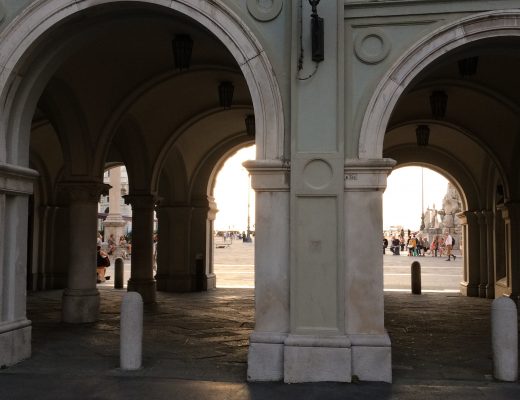Written by Jurek Wötzel, Head Writer
When I moved to Leipzig as a child, the city was a dead end. Now, there are few places in Germany that investors have more faith in than Leipzig. It is a city on its path to adulthood. Yet, the results of its growth aren’t all bright and rosy.
Those who took to the streets in the fall of 1989 couldn’t have foreseen what the close future of East Germany would look like. The decade to come taught the liberated citizens of the GDR a lesson about unemployment, poverty, and exploitation. As state-owned factories and businesses were shut down one after the other, the harsh realities of a sudden change to a market-based economy forced many to leave Leipzig to seek a better future in the West.
By the mid-1990s, the city had shrunk to 440,000 inhabitants, whereas in the 1960s it hosted 600,000 people. The scent of economic decline was in the air, neo-Nazi youth were patrolling the streets, and the population was aging drastically as a large number of young people fleeing the city. But Leipzig was cheap. Even in its most expensive areas, the cost for a two-room apartment would amount to no more than 400 euros. Investors could buy beautifully renovated three-story houses in the architectural style of the Founding Epoch for cheap at about 250,000 euros.
The city turned into a paradise for students, artists, and musicians. In the 2000s, a small, but dynamic alternative scene developed and brought fresh energy. A vibrant squatter scene emerged occupying a large number of old, unrenovated houses. Soon, Leipzig’s anti-fascist movement grew and managed to reclaim the streets from the nazis bit by bit. The result was that by 2010 it was the fastest growing city in Germany with an annual influx of about 10,000 people.
With the growth came the hype. Leipzig, often called ‘Hypezig’, the ‘Better Berlin’ or the ‘New Berlin’, was increasingly put in the spotlight. At the beginning of this decade, rents were still incredibly low, there was plenty of space and the cultural offer was immense for a city of its size.

Cineding: a small cinema in Plagwitz, Leipzig’s West
Leipzig was home to an abundance of free open-air raves, small ateliers, political theatre groups, cheap bars, non-profit cinemas, you name it. Before I left Leipzig in 2015, I could feel that there was movement, with a new place or event to check out each week. It was a city in puberty.
That puberty stage of a city, when there is vibrant dynamism, is maybe the most interesting time. Whether it was Amsterdam in the 80s, Berlin in the 90s, or Leipzig in this decade – the spirit of the adolescent city is unique. Like a teenager, the city tries out different paths, sometimes they turn out to be crazy, sometimes brilliant.

An atelier in the “Baumwollspinnerei”, which used to be one of Europe’s biggest complex of cotton processing factories.
Now, three years later, things have started to change. Leipzig is growing up. Living space is getting rarer, especially for groups that are ‘unfavourable’ to landlords, like students, artists, and musicians. Much of the vacancies have been bought, renovated, and sold. The squatter scene is being driven out of the city, house by house.
Everywhere there are new condos: clean, white, luxurious apartment buildings that few locals can afford. The streets are being upgraded and the boroughs polished.
This is no surprise: the market logic prevents any city from being frozen in time. At one point, capital will flow, houses will be bought and society will be commercialized.
Those spaces that made Leipzig special are being crowded out of the city. The non-profit bars and clubs, the small-scale cinemas and theatres, the neighborhood ateliers. Opportunities for self-expression beyond economic needs are getting rarer. In short, the city is losing its spirit of freedom.
Take for instance the club scene. Westwerk, a non-profit club that hosted techno events on Wednesdays for a one euro entry fee closed, because the landlord can earn more money renting the space to a supermarket chain. While the Institut für Zukunft, Germany’s second most popular techno club according to the readers of Groove Magazine, recently struggled with noise complaints from neighbors. Nightlife sounds do not fit into the working person’s schedule.

The Kohlrabizirkus: its cellar is home to the Institut für Zukunft
Leipzig has grown into a city close to adulthood. Big corporations like Porsche, BMW, DHL or Amazon have settled in, and are continuously expanding. The business climate is exuberantly optimistic. Over the years, a dynamic start-up scene established itself in the city. Tourism has led to the opening a range of new hotels, mainly large international chains such as Hotel One or Novotel.
And that is good news, given that the region used to be Germany’s poverty capital just a few years ago. In 2017, unemployment was at 7.0% compared to 10.5% in 2013, the lowest level since 1991. In 2010, 27% of Leipzig’s citizens were susceptible to falling into poverty, compared to the 14% German average. That number is slowly decreasing.
Still, I look at the rapid development with a deep ambivalence. Could it be is possible to find a way to eternal urban youth? Then, cities could preserve more of their character, more of their dynamic spirit. They could develop into a better version of themselves, rather than just another version of the standard city.
I hope that Leipzig will find a way to sustain much of what made it what it is today. In that case, it can set an example for those cities that are yet to experience similar growth.





No Comments